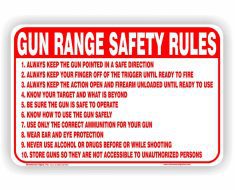“Preserving our right to bear arms for generations to come.”
Gun Control Measures in the 21st Century
The Second Amendment of the United States Constitution, which guarantees the right of the people to keep and bear arms, has been a topic of heated debate for decades. In recent years, the issue of gun control has become even more contentious, with mass shootings and gun violence sparking calls for stricter regulations on firearms. As we look to the future, it is important to consider the implications of these debates on the future of the Second Amendment in America.
One of the key challenges facing policymakers and advocates of gun control measures is finding a balance between protecting the rights of law-abiding citizens to own firearms and preventing gun violence. While the Second Amendment guarantees the right to bear arms, it is not an unlimited right. The Supreme Court has ruled that certain restrictions on gun ownership are permissible, such as prohibiting felons and the mentally ill from owning firearms.
In recent years, there have been calls for more comprehensive background checks on gun buyers, as well as bans on certain types of firearms, such as assault weapons. These measures are aimed at reducing the likelihood of mass shootings and other forms of gun violence. However, opponents of gun control argue that such measures infringe on the Second Amendment rights of law-abiding citizens.
Despite these debates, there is growing support for some form of gun control measures in the United States. Polls show that a majority of Americans support universal background checks for gun buyers, as well as restrictions on the sale of high-capacity magazines and assault weapons. This shift in public opinion has led to some progress on the issue of gun control at the state level, with several states passing laws to strengthen background checks and ban certain types of firearms.
In addition to state-level efforts, there have been calls for federal action on gun control. President Joe Biden has called for a ban on assault weapons and high-capacity magazines, as well as universal background checks for gun buyers. These proposals face an uphill battle in Congress, where Republicans have traditionally been opposed to gun control measures. However, there is hope that bipartisan support for some form of gun control could emerge in the wake of recent mass shootings.
As we look to the future, it is clear that the issue of gun control will continue to be a hot-button issue in American politics. The Second Amendment will undoubtedly play a central role in these debates, as advocates on both sides of the issue seek to balance the rights of gun owners with the need to prevent gun violence. It is likely that the future of the Second Amendment in America will be shaped by ongoing debates over gun control measures and the impact of gun violence on society.
In conclusion, the future of the Second Amendment in America is uncertain. While the right to bear arms is enshrined in the Constitution, there is growing support for some form of gun control measures to prevent gun violence. As policymakers and advocates grapple with these issues, it is important to find a balance that protects the rights of law-abiding citizens while also addressing the public safety concerns posed by firearms. Only time will tell how these debates will shape the future of the Second Amendment in America.
Impact of Technology on Gun Rights
The Second Amendment of the United States Constitution guarantees the right of American citizens to bear arms. This fundamental right has been a topic of debate and controversy for many years, with advocates on both sides arguing fiercely for their beliefs. In recent years, advancements in technology have had a significant impact on gun rights in America.

One of the most notable technological advancements in the world of firearms is the development of 3D-printed guns. These guns are created using a 3D printer, which allows individuals to manufacture their own firearms at home. This technology has raised concerns among lawmakers and gun control advocates, who worry about the potential for these weapons to fall into the wrong hands.
Another technological development that has impacted gun rights is the rise of smart guns. These firearms are equipped with technology that allows them to only be fired by authorized users, such as the gun owner. While this technology has the potential to reduce accidental shootings and gun thefts, it has also faced pushback from gun rights advocates who fear government overreach and the potential for malfunctions.
Advancements in artificial intelligence have also had an impact on gun rights in America. AI-powered surveillance systems can now be used to monitor gun owners and track their movements. While this technology has the potential to improve public safety, it also raises concerns about privacy and civil liberties.
The rise of social media has also played a role in shaping the future of the Second Amendment. Platforms like Facebook and Twitter have become battlegrounds for the gun rights debate, with users on both sides using these platforms to spread their message and mobilize support. Social media has also been used to organize protests and rallies, further shaping the public discourse on gun rights.
As technology continues to advance, it is likely that the debate over gun rights in America will only intensify. Lawmakers will need to grapple with how to regulate new technologies like 3D-printed guns and smart guns, while also balancing the rights of gun owners with public safety concerns. The future of the Second Amendment in America will be shaped by these technological advancements, as well as by the ongoing debate over gun rights and gun control.
In conclusion, the impact of technology on gun rights in America is significant and far-reaching. From 3D-printed guns to smart guns to AI-powered surveillance systems, advancements in technology have the potential to reshape the debate over the Second Amendment. As technology continues to evolve, lawmakers and citizens alike will need to grapple with how to navigate these new challenges and ensure that the rights of gun owners are protected while also promoting public safety. The future of the Second Amendment in America will be shaped by these technological advancements, as well as by the ongoing debate over gun rights and gun control.
Supreme Court Decisions on Second Amendment
The Second Amendment of the United States Constitution has been a topic of much debate and controversy in recent years. The amendment, which guarantees the right of the people to keep and bear arms, has been the subject of numerous legal challenges and Supreme Court decisions. These decisions have shaped the interpretation of the Second Amendment and have had a significant impact on gun rights in America.
One of the most important Supreme Court decisions on the Second Amendment came in 2008, with the case of District of Columbia v. Heller. In this case, the Supreme Court held that the Second Amendment protects an individual’s right to possess a firearm for self-defense within the home. This decision was a landmark ruling that affirmed the individual right to bear arms and struck down a Washington, D.C. law that banned handguns.
The Heller decision was followed by another important Supreme Court case in 2010, McDonald v. City of Chicago. In this case, the Court held that the Second Amendment applies to the states through the Fourteenth Amendment’s Due Process Clause. This decision extended the protections of the Second Amendment to state and local governments, ensuring that individuals’ rights to bear arms are not infringed upon by state or local laws.
These two decisions have had a significant impact on the future of the Second Amendment in America. They have established that the right to bear arms is an individual right, rather than a collective right tied to militia service. This has led to a greater emphasis on individual gun rights and has made it more difficult for states and local governments to pass restrictive gun control laws.
However, despite these landmark decisions, the future of the Second Amendment in America remains uncertain. The Supreme Court has not taken up a major Second Amendment case in recent years, leaving many questions unanswered about the scope of gun rights in America. There are still many legal challenges and controversies surrounding the Second Amendment, including issues such as assault weapon bans, background checks, and concealed carry laws.
One of the key questions facing the future of the Second Amendment is how the Court will balance individual gun rights with public safety concerns. While the Court has affirmed the individual right to bear arms, it has also recognized that this right is not unlimited and can be subject to reasonable restrictions. The Court has upheld laws that prohibit felons and the mentally ill from owning firearms, as well as laws that restrict the carrying of firearms in sensitive places such as schools and government buildings.
As the debate over gun rights continues to evolve, it is likely that the Supreme Court will be called upon to clarify and expand upon its previous decisions on the Second Amendment. The Court may be asked to weigh in on issues such as magazine capacity limits, red flag laws, and restrictions on certain types of firearms. These decisions will have a lasting impact on the future of gun rights in America and will shape the way in which the Second Amendment is interpreted and applied in the years to come.
In conclusion, the Supreme Court decisions on the Second Amendment have played a crucial role in shaping the future of gun rights in America. While the Court has affirmed the individual right to bear arms, there are still many unanswered questions and legal challenges surrounding the Second Amendment. As the debate over gun rights continues, it is likely that the Court will be called upon to clarify and expand upon its previous decisions, providing guidance on how the Second Amendment should be interpreted and applied in the modern era.
Public Opinion on Gun Ownership
The Second Amendment of the United States Constitution, which guarantees the right of the people to keep and bear arms, has been a topic of heated debate for many years. With the rise of mass shootings and gun violence in America, the issue of gun ownership has become increasingly polarized. Public opinion on the Second Amendment varies widely, with some advocating for stricter gun control laws and others staunchly defending their right to own firearms.
According to a 2019 Pew Research Center survey, a majority of Americans support stricter gun laws. The survey found that 60% of Americans believe that gun laws should be tougher, while 27% believe they should be kept as they are, and 11% believe they should be less strict. This shift in public opinion towards stricter gun control measures can be attributed to the increasing frequency of mass shootings in the United States, which have sparked calls for action to prevent further tragedies.
Despite the growing support for stricter gun laws, there is still a significant portion of the population that strongly opposes any form of gun control. Proponents of gun rights argue that the Second Amendment is a fundamental right that should not be infringed upon. They believe that owning firearms is essential for self-defense and protection against tyranny, and that any attempts to restrict gun ownership are a violation of their constitutional rights.
The debate over gun ownership in America is further complicated by the influence of special interest groups such as the National Rifle Association (NRA), which has long been a powerful advocate for gun rights. The NRA wields significant political influence and has successfully lobbied against many proposed gun control measures, arguing that they infringe upon the Second Amendment rights of law-abiding citizens.
In recent years, there have been several high-profile mass shootings that have reignited the debate over gun control in America. The tragic events at Sandy Hook Elementary School, Pulse nightclub, and Las Vegas concert have prompted calls for action to prevent further loss of life. However, despite widespread public support for stricter gun laws, progress on gun control legislation has been slow due to political gridlock and the influence of special interest groups.
As the debate over gun ownership in America continues, it is clear that finding a solution that satisfies both sides of the issue will be a challenging task. Striking a balance between protecting Second Amendment rights and preventing gun violence will require a nuanced approach that takes into account the concerns of all stakeholders. It is essential for policymakers to listen to the voices of the American people and work towards common-sense solutions that prioritize public safety while respecting individual rights.
In conclusion, the future of the Second Amendment in America remains uncertain as the debate over gun ownership continues to divide the nation. Public opinion on gun control is shifting towards stricter laws, but there is still a significant portion of the population that staunchly defends their right to own firearms. Finding a compromise that addresses the concerns of both sides will be crucial in moving forward and preventing further tragedies. Only time will tell what the future holds for the Second Amendment in America.
Role of Lobbying Groups in Shaping Gun Laws
The Second Amendment of the United States Constitution, which guarantees the right to bear arms, has been a topic of heated debate for decades. As gun violence continues to be a major issue in America, the role of lobbying groups in shaping gun laws has come under scrutiny. These groups, such as the National Rifle Association (NRA), have significant influence over lawmakers and play a crucial role in shaping the future of the Second Amendment in America.
Lobbying groups like the NRA have been successful in advocating for gun rights and preventing the passage of stricter gun control laws. They use their financial resources and political connections to influence lawmakers and ensure that their interests are protected. This has led to a situation where gun laws in America are often more lenient than in other developed countries, despite the high rates of gun violence.
One of the key tactics used by lobbying groups is campaign contributions. By donating large sums of money to political candidates who support their agenda, these groups can ensure that their voices are heard in the halls of power. This has created a system where lawmakers are beholden to the interests of these groups, rather than the will of the people they were elected to represent.
In addition to campaign contributions, lobbying groups also engage in grassroots organizing and public relations campaigns to shape public opinion on gun rights. They use fear tactics and misinformation to rally support for their cause, painting any attempt to regulate guns as an attack on the Second Amendment itself. This has created a polarized political climate where any discussion of gun control is met with fierce opposition from gun rights advocates.
Despite the efforts of lobbying groups, there is growing momentum for stricter gun control laws in America. The recent wave of mass shootings has galvanized public opinion and put pressure on lawmakers to take action. This has led to the passage of some modest gun control measures at the state level, such as universal background checks and red flag laws.
However, the influence of lobbying groups remains strong, and any attempt to pass comprehensive gun control legislation at the federal level is likely to face fierce opposition. The NRA and other groups will continue to use their resources to block any efforts to restrict gun rights, citing the Second Amendment as their justification.
In order to shape the future of the Second Amendment in America, it is crucial for lawmakers and the public to push back against the influence of lobbying groups. By holding elected officials accountable and demanding common-sense gun laws, we can ensure that the right to bear arms is balanced with the need for public safety.
Ultimately, the future of the Second Amendment in America will be determined by the actions of lawmakers and the will of the people. It is up to us to decide whether we want to continue down the path of lenient gun laws or take steps to prevent further tragedies. By standing up to lobbying groups and advocating for sensible gun control measures, we can create a safer and more secure future for all Americans.





